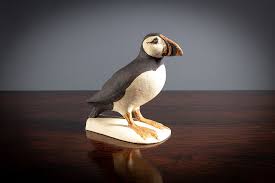The Heartbeat of Coastal Communities
As the sun rises over the rugged cliffs of the Canadian coastline, the air is filled with the sound of waves crashing and seabirds calling. Among them, the whimsical puffin—a bird known for its distinctive colorful beak and endearing personality—has become a symbol of resilience for local communities. But this seabird, often dubbed the ‘clown of the sea,’ is facing increasingly uncertain futures, prompting a growing movement for its conservation.
Puffin Populations: A Decline
Recent studies reveal alarming trends in puffin populations across Atlantic Canada. According to the Canadian Wildlife Federation (CWF), puffin numbers have dropped significantly in the past decade, with a 30% decline in certain regions. Factors contributing to this downward trajectory include climate change, overfishing, and habitat loss.
A Community Awakens
In response to these challenges, communities on the frontlines are uniting to champion their feathered friends. In Newfoundland and Labrador, local organizations have launched initiatives that blend education with action. Adult volunteers and students come together for beach clean-ups, while local artists raised funds through puffin-themed art events. “It’s heartening to see people of all ages coming together,” says Marianne Brewster, a marine biologist and local volunteer. “The puffin is more than just a bird; it’s a part of our heritage and ecosystem. We have to protect it for future generations.”
Social Media Sentiment
As the movement gains traction, social media platforms are abuzz with support for the puffin. Hashtags like #PuffinPower and #SaveThePuffin have emerged, with thousands of users sharing photos, stories, and resources about puffin conservation. Online campaigns encourage citizens to participate in local programs, fostering a sense of collective responsibility. Public sentiment reflects a potent blend of love for the puffin and a concern for environmental integrity.
The Bigger Picture
The puffin’s plight echoes broader environmental issues that transcend geographical boundaries. Coastal habitats are in jeopardy, revealing a mosaic of human impact on nature. Conservationists highlight the ripple effects on marine biodiversity and the fishing industry, which further entwine human livelihoods with the fate of the puffin. “Every small action counts; it is a reflection of our respect for nature,” says Brewster.
What’s Next for the Puffin?
Looking ahead, community initiatives are poised to expand and adapt as they respond to the challenges faced by puffins. Educational programs in schools are blossoming, laying the groundwork for a new generation of conservationists while partnering with local research organizations to monitor puffin populations and restore their habitats. The growing awareness reflects a deep-rooted understanding that conserving the puffin also means caring for the coasts that support countless lives, human and avian alike.
A Call to Action
As puffins continue their fight for survival, the bonds forged among community members serve as a reminder that people have the power to create meaningful change. Local efforts are just the tip of the iceberg; a rallying call for broader systemic changes in policy and practice is vital. With every initiative undertaken, the hope remains alive, echoing the cries of the puffin across the cliffs, urging all to unite in their defense.
